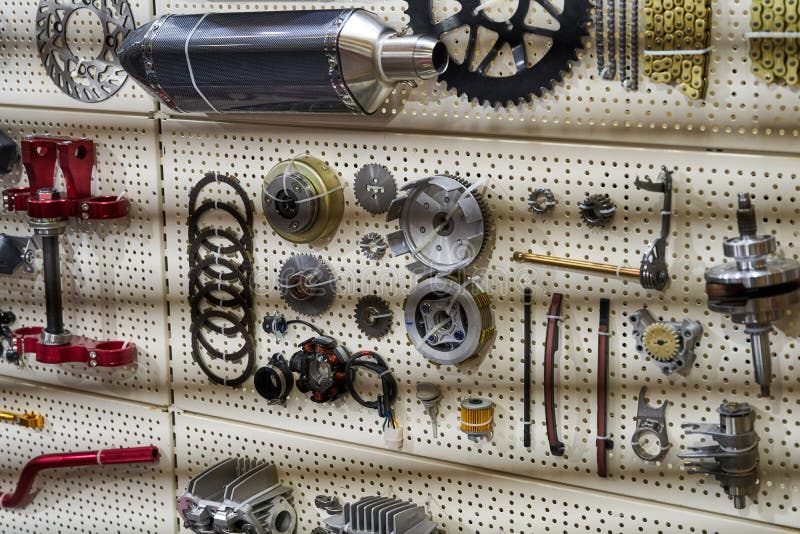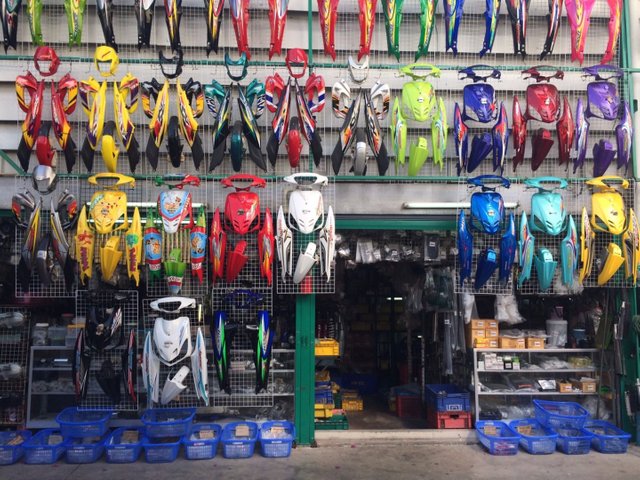Understanding the Vital Parts of a Motorbike: A Comprehensive Guide for Lovers
For motorbike fanatics aiming to raise their riding experience and ensure their bikes run smoothly, recognizing the vital elements of a bike is extremely important. Each aspect, from the engine's intricate functions to the crucial duty of the braking devices, not just influences performance however likewise safety and convenience. This overview will go through the fundamental components that every cyclist ought to recognize with, enabling informed options in both maintenance and potential upgrades. As we start this exploration, one must ask: exactly how does each component engage to create the seamless experience every enthusiast looks for?
Engine Elements

The camshaft plays a crucial function in regulating the timing of the engine's valves, making certain the accurate opening and closing essential for efficient gas and air consumption, as well as exhaust expulsion. This timing is essential to maintaining optimum engine performance and effectiveness. In addition, the carburetor or fuel shot system, depending on the motorbike version, is accountable for blending air with fuel in the appropriate proportion for burning.
The cooling system, either air or liquid-based, functions to keep the engine's temperature within operational restrictions, stopping getting too hot and ensuring durability - motorcycle shop. Each element, diligently made and integrated, adds to the seamless operation of the engine, specifying the bike's power output and overall efficiency
Transmission System
Integral to the motorcycle's performance, the transmission system makes certain effective power transfer from the engine to the wheels. This system makes up a number of critical components, including the clutch, gearbox, and final drive, each playing an important role in translating the engine's power into movement. The clutch, usually run by a hand lever, serves to disengage the engine and involve from the transmission, enabling smooth equipment adjustments and regulated velocity.
The gearbox, often referred to as the transmission correct, has a collection of equipments that cyclists can by hand move through to change the bike's speed and torque output. These equipments are prepared in a sequence that makes it possible for the motorbike to increase efficiently and maintain ideal engine performance throughout various speeds. Many motorcycles use a sequential gearbox, calling for the biker to move gears in a fixed order.
Braking Systems
While comprehending the transmission system is crucial to taking advantage of a motorbike's power, similarly vital is the capability to regulate and stop that power effectively, which is where braking devices enter play. Brakes are important for safety and performance, offering the cyclist with the needed control to navigate various surfaces and conditions. Typically, motorbikes feature 2 sorts of stopping systems: disc brakes and drum brakes.
Disc brakes are extra prevalent in contemporary bikes due to their premium performance. This system provides far better heat dissipation, constant efficiency, and enhanced stopping power, particularly in damp problems.
On the other hand, drum brakes, though much less common, are still found in some motorbikes. They work by pushing brake shoes against the inner surface area of a drum affixed to the click this site wheel. While normally much less reliable in heat dissipation and quiting power, drum brakes are easier and extra affordable.
Understanding these stopping systems' subtleties permits cyclists to preserve their motorcycles correctly and value the design that makes sure safe and efficient stopping.
Suspension and Guiding
Suspension and steering systems are important elements that substantially affect a motorcycle's handling and ride comfort. The suspension system, being composed of forks at the front and shock absorbers at the back, absorbs road abnormalities, improving stability and control. Front forks, inverted or normally telescopic, compress and rebound to alleviate effects, while rear shock absorbers keep tire contact with the roadway, critical for traction and safety.
Steering, focused around the handlebars, connects the rider to the bike's directional control. The steering head bearings ensure smooth operation, enabling exact ability to move. Appropriate positioning and upkeep of these bearings are critical for foreseeable steering response and minimizing motorcyclist tiredness.
The suspension's adjustability is another essential facet; preload, damping, and rebound setups enable personalization to suit numerous riding problems and styles. This adaptability i was reading this is vital for enhancing performance, whether browsing metropolitan streets or taking on tough trails. Technologies like electronic shock absorber supply real-time modifications, enhancing experience quality throughout diverse surfaces.

Electrical Equipments
After ensuring a smooth and regulated experience through reliable suspension and steering systems, focus turns to the electrical systems, a crucial facet of contemporary bikes. These systems play an essential duty not only in starting the engine yet additionally in powering numerous elements that boost the functionality and safety and security of the bike.
At the heart of a bike's electrical system is the battery, which stores electrical power required for beginning the engine and powering supporting systems - motocross gear nz. The alternator or generator, paired with the rectifier-regulator, guarantees the battery stays billed while the bike is in procedure, transforming mechanical power right into electric energy and preserving voltage degrees
The ignition system, an additional critical element, is accountable for sparking the air-fuel mix in the engine's cyndrical tubes. Modern motorbikes typically use a digital ignition system, using better efficiency and reliability compared to conventional systems.
Lighting systems, consisting of headlights, tail lights, and indicators, are also important, making sure exposure and safety and security for the cyclist. Added digital elements such as sensing units, control devices, and presents add to innovative attributes like gas shot administration, anti-lock braking systems (ABS), and digital control panels, better boosting the riding experience.
Verdict
A thorough understanding of a motorbike's crucial elements, consisting of the engine, transmission system, stopping devices, suspension, steering, and electric systems, is important for lovers aiming to enhance performance, comfort, and safety. Proficiency of these elements permits notified decisions relating to upkeep and upgrades, discover here eventually enhancing the riding experience. By incorporating this knowledge, motorcyclists can guarantee their motorbikes run at peak efficiency and dependability, thereby taking full advantage of both satisfaction and durability of their lorries.
For motorcycle enthusiasts looking to raise their riding experience and ensure their bikes run smoothly, comprehending the important elements of a motorbike is paramount.Important to the bike's capability, the transmission system ensures effective power transfer from the engine to the wheels.While recognizing the transmission system is key to taking advantage of a motorbike's power, similarly vital is the ability to regulate and stop that power efficiently, which is where stopping devices come into play. Generally, motorbikes feature two types of braking systems: disc brakes and drum brakes.
A comprehensive comprehension of a motorbike's vital elements, including the engine, transmission system, braking systems, suspension, steering, and electrical systems, is essential for enthusiasts aiming to optimize convenience, safety and security, and efficiency.